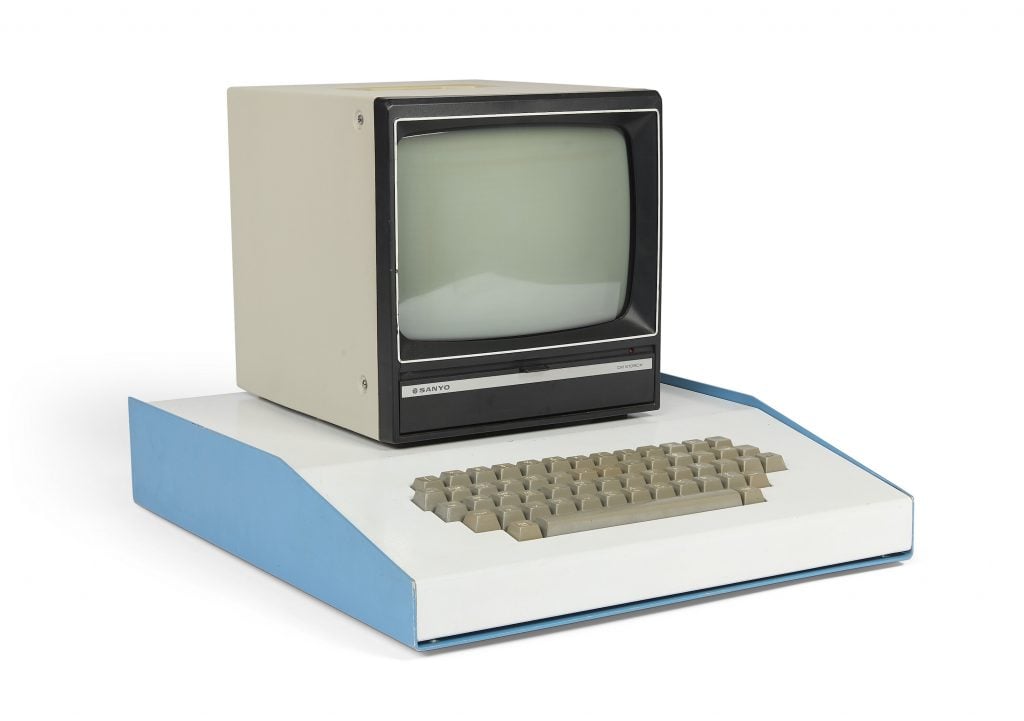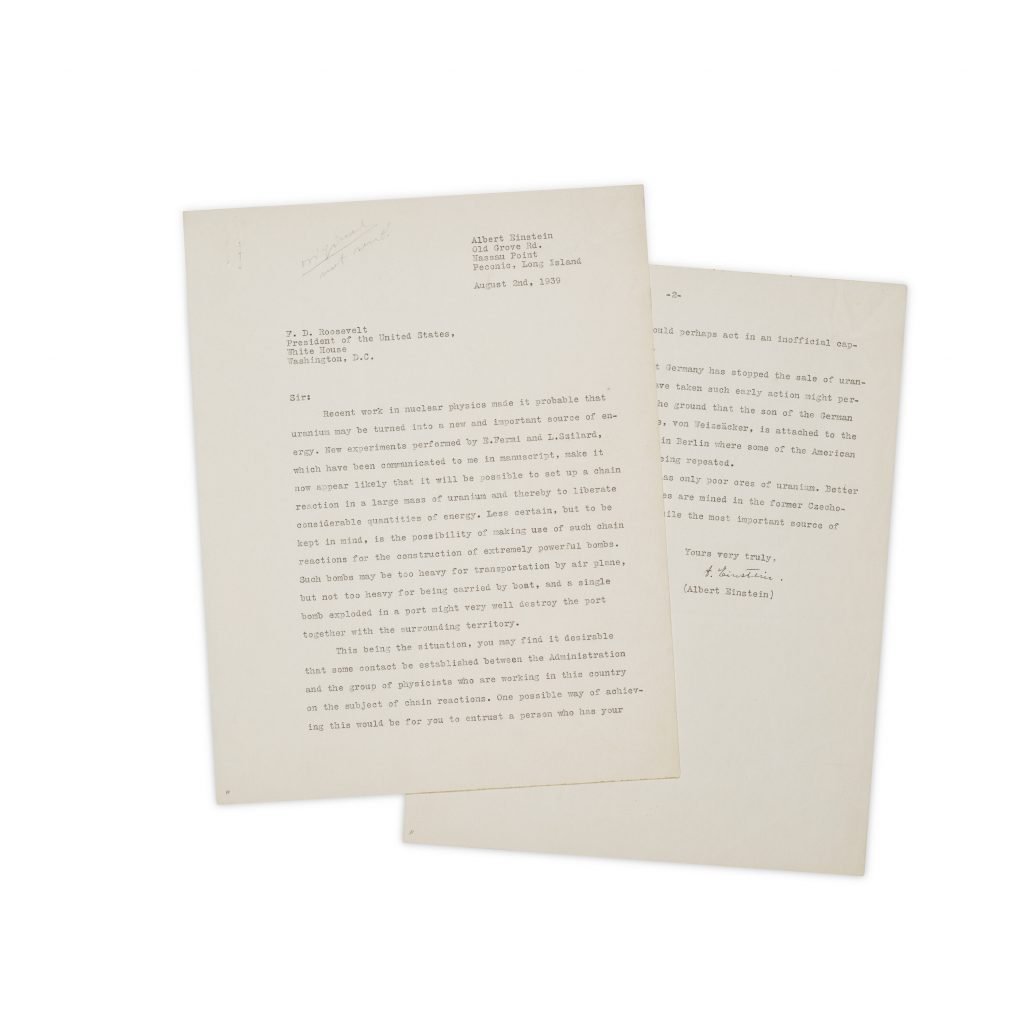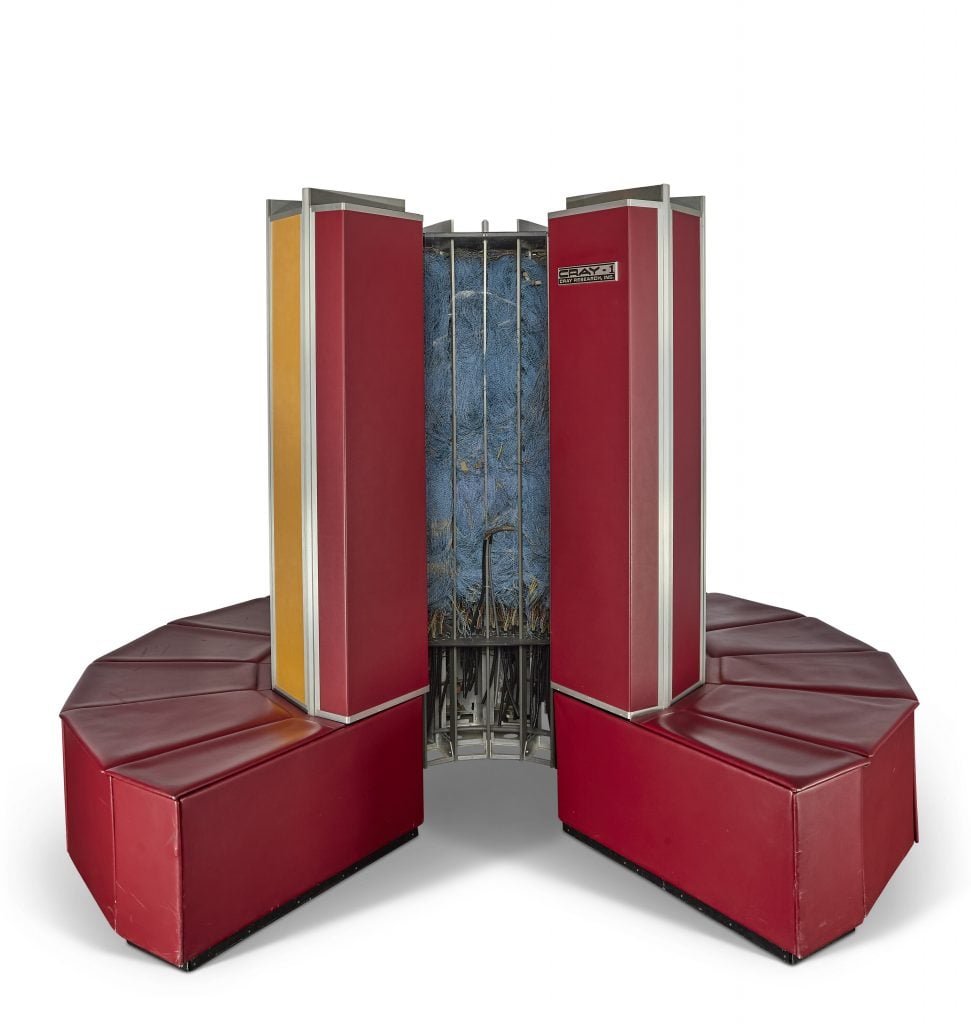Collectibles
Paul Allen’s Collection of First-Gen Tech and Titanic Memorabilia Fetches $10 Million
The auction's top lot was a letter Albert Einstein penned to Franklin D. Roosevelt

Vintage computers, space-age artifacts, and historic letters were among the three dozen items from the collection of Paul Allen, the late Microsoft co-founder, that netted more than $10 million at Christie’s on September 10.
The sale was the live portion of a three-part series centered on first-generation technologies and their inventors. The other two sales, one focused on computing history and the other on art of the future, are taking place online through tomorrow.
Though Allen was a prodigious collector of devices that heralded the digital age, the top lot was made of paper and ink: Albert Einstein’s 1939 typewritten letter to Franklin D. Roosevelt, in which he warned of Germany’s ability to develop a nuclear bomb and advised the president to contact a group of American physicists working on nuclear chain reactions. Roosevelt followed this advice and the Manhattan Project was soon formed.
The letter sold for $3.9 million, topping the previous record for an Einstein letter, $2.8 million paid in 2018 for the so-called “God letter,” addressed to the philosopher Eric Gutkind, in which Einstein discussed his Jewish faith and man’s eternal pursuit of meaning.

Albert Einstein’s 1939 letter to Franklin D. Roosevelt. Photo: Christies.
Many of the computers on offer were drawn from Living Computers: Museums + Labs, the Seattle technology museum that Allen launched in 2012, which never reopened following 2020 lockdowns.
The Cray-1 Supercomputer led the way. Released in the late 1970s by Seymour Cray, a pioneering American computer engineer, the Cray-1 broke new ground in terms of what tasks computers could perform, modeling everything from weather patterns to nuclear reactions. The supercomputer also has aesthetic flair, with alternating red and yellow panels and built-in seating. It was the first time the Cray-1 had come to auction, and it sold for $1 million.

The Cray-1 Supercomputer was priced at $8 million when it was first released. Photo: courtesy Christie’s.
The auction also featured considerably older machines. A four-rotor enigma machine, developed by Germany’s navy during World War II to encrypt messages, doubled its high estimate and sold for $718,200. The teal Bendix G-15 that was released in 1956 as a relatively accessible machine for small institutions and businesses—it was the size of a refrigerator rather than of a room—sold for $21,420.
Allen also collected some early memorabilia from a competitor. An Apple-1 computer from 1976, the first personal computer the Palo Alto company ever made, sold for $945,000. A Steve Jobs–signed letter in which the 19-year-old instructs a Bay Area retailer on how to sell the Apple-1 sold for $302,400.

A first-class lunch menu from the day the Titanic hit an iceberg. Photo: Christie’s.
Elsewhere, the auction showed Allen’s eclectic tastes. The sale featured two lots related to the Titanic. A first-class luncheon menu from the day the vessel struck an iceberg realized $340,200, crushing its high estimate of $50,000. A stitched cotton flag given to a celebrated survivor of the wreck in 1922 sold for $81,000.
Prior to his death in 2018, Allen signed the Giving Pledge, initiated by Warren Buffett and Bill Gates, in which the world’s richest promise to give away the majority of his wealth. This is the latest in a series of auctions. In November 2022, an Allen sale of Impressionist, Modern, and contemporary art accrued $1.5 billion, the highest total ever achieved in a single auction.





